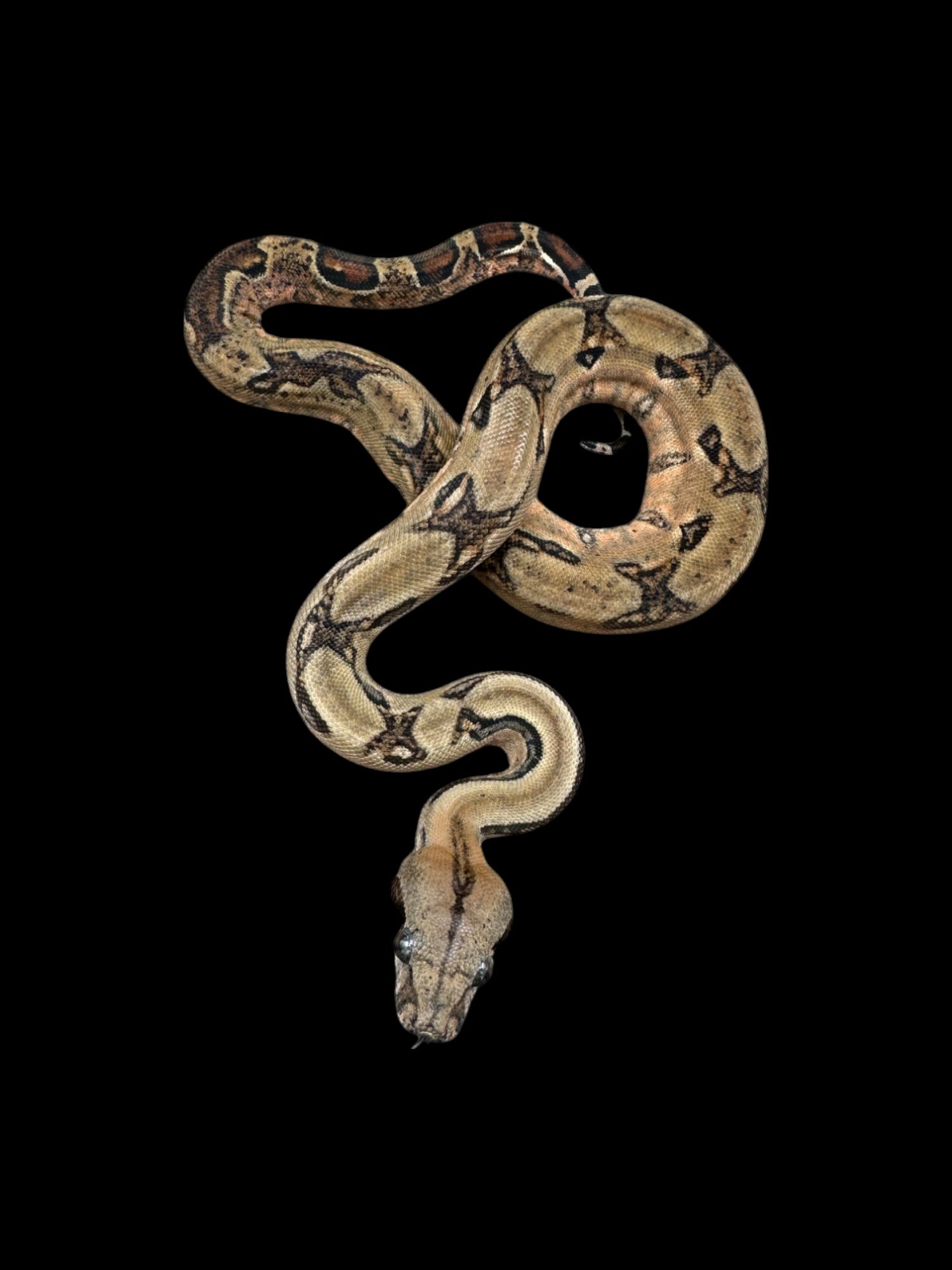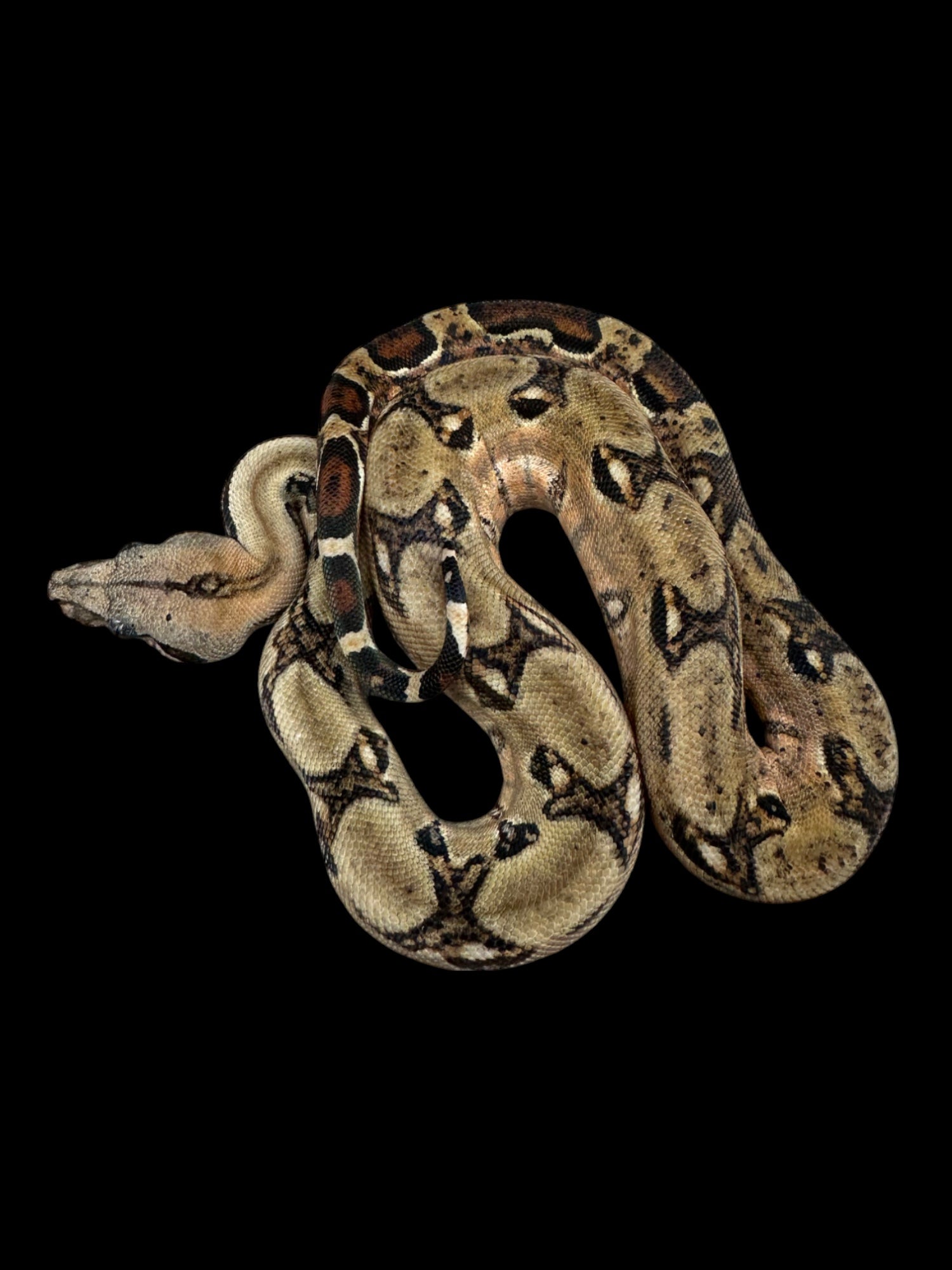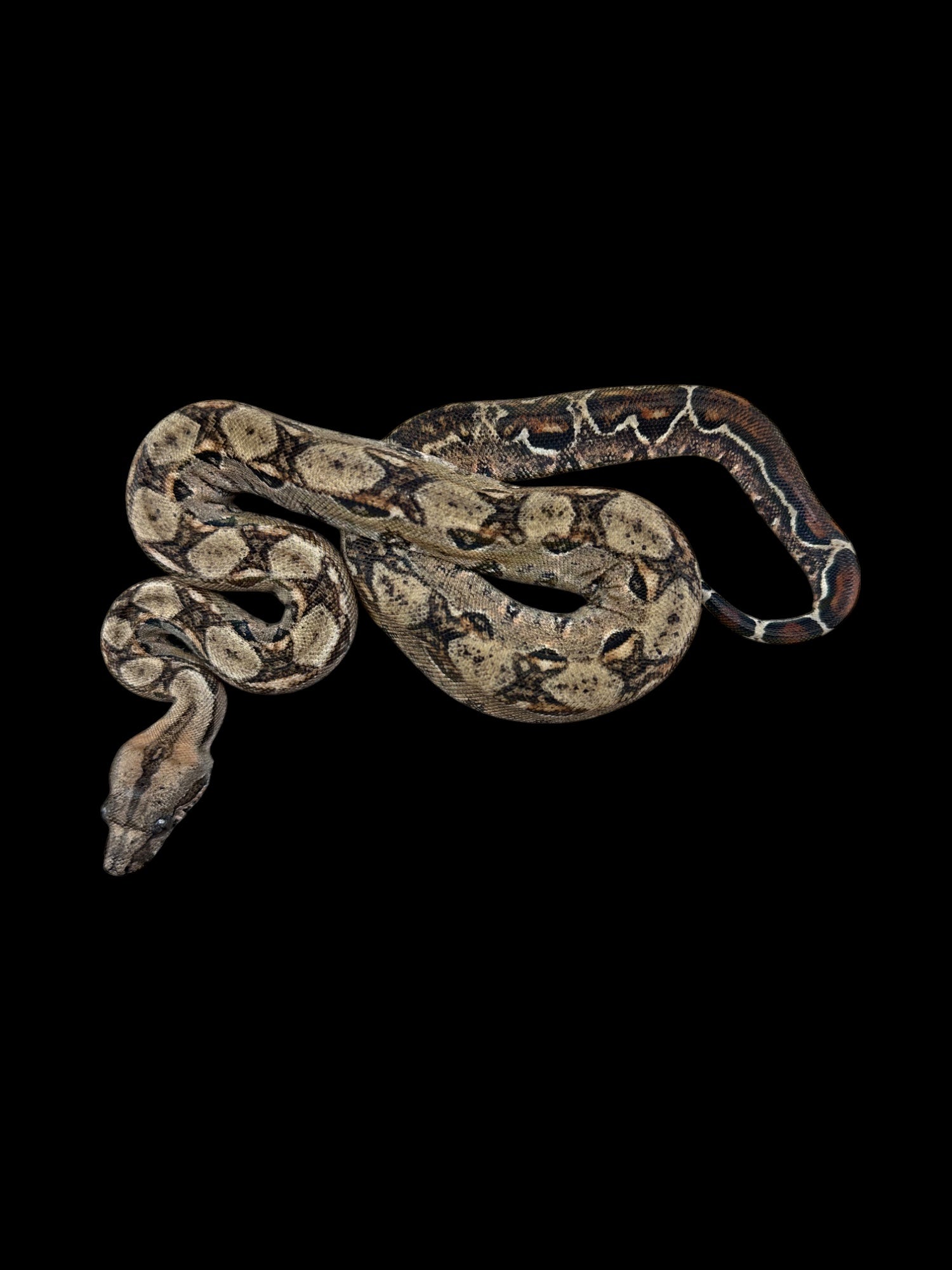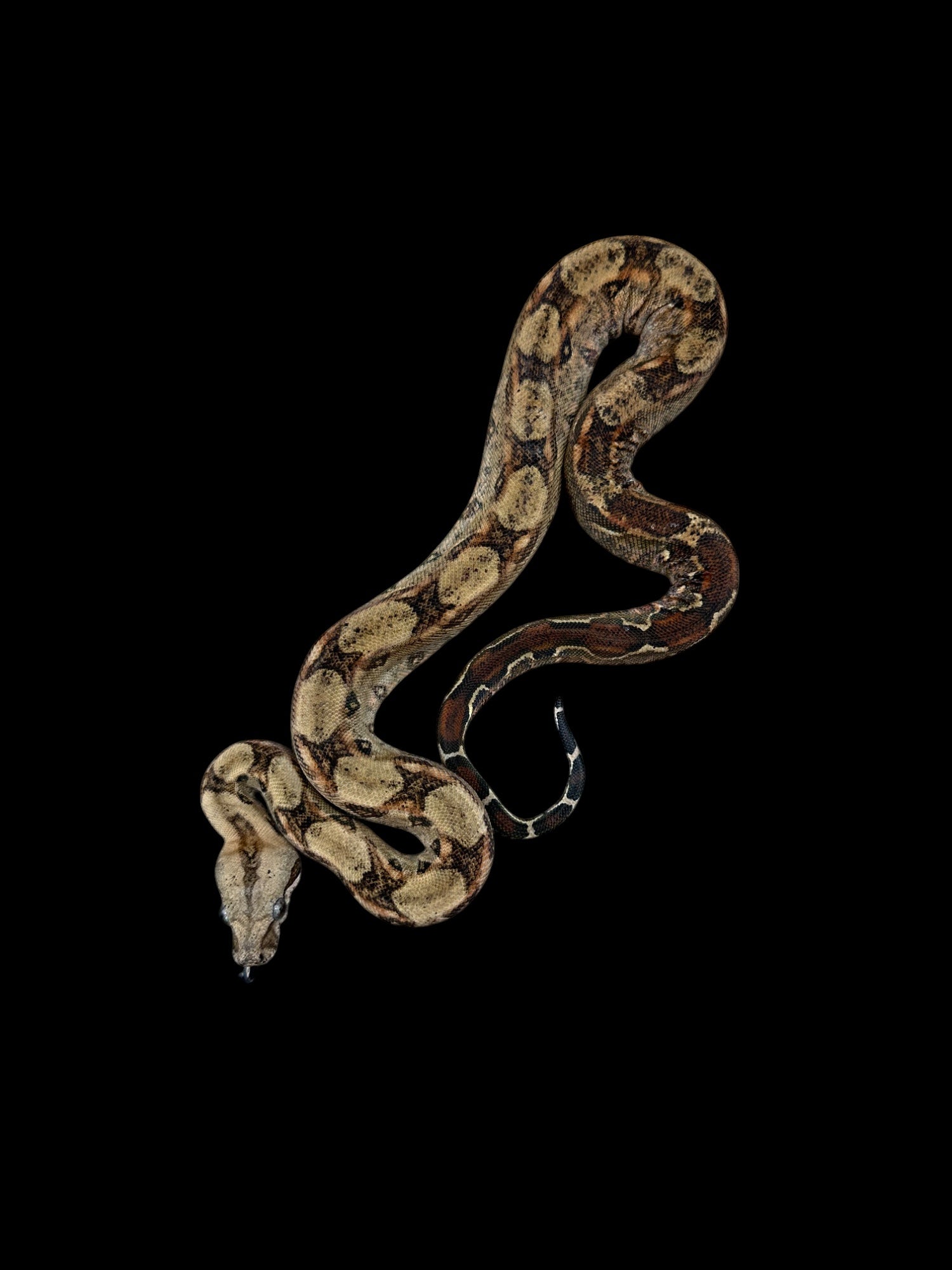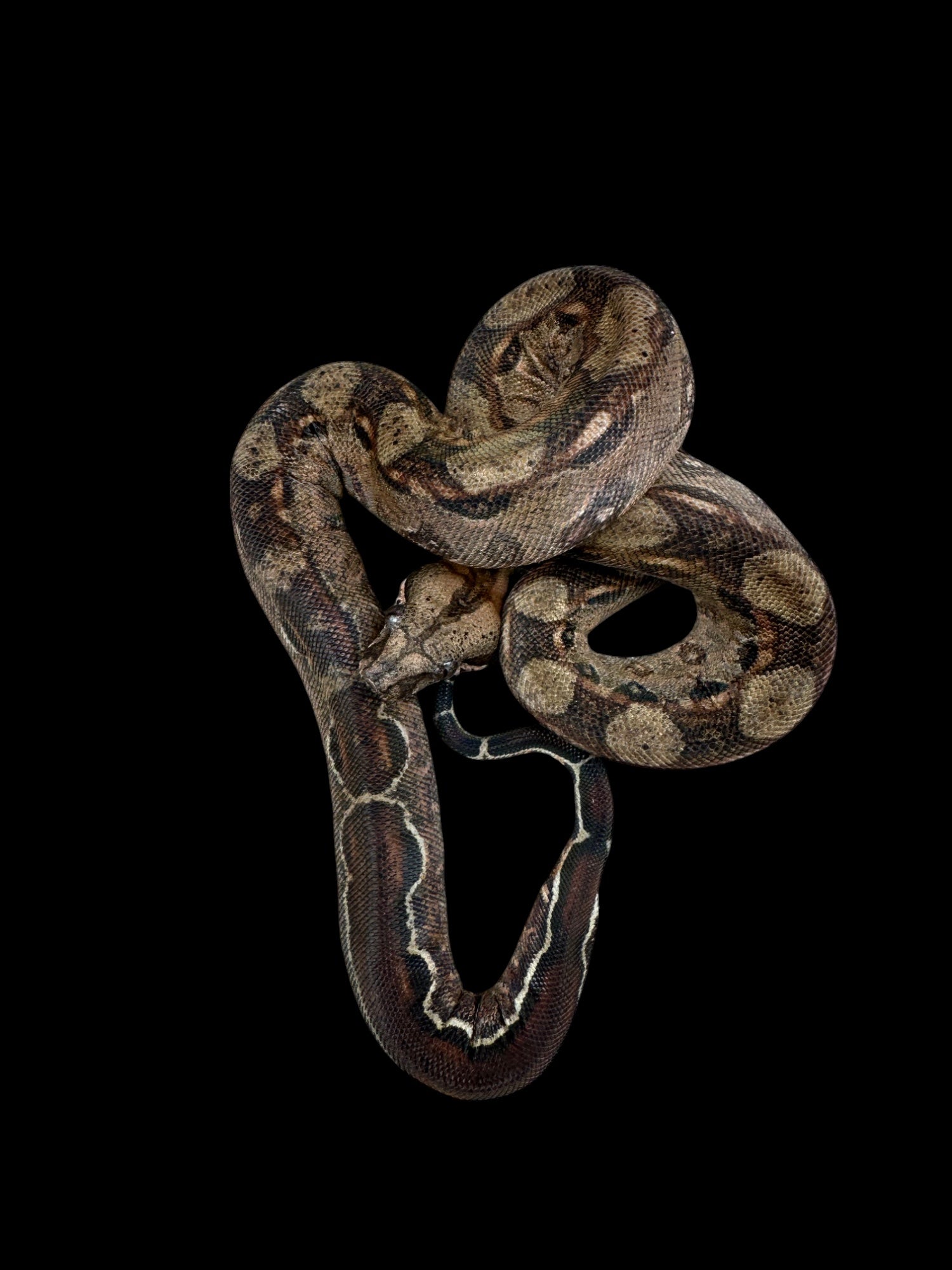Photo Disclaimer
Description
Boa Constrictor Imperator (BCI) Cross
Boa constrictor imperator
Morph/Lineage: Double Het John Berry Blood El Salvador Boa × Leopard Sonoran Desert Boa
Species Overview
-
Size: Adult size depends on lineage influence. El Salvador boas (Blood line) are typically smaller, averaging 4–6 feet (1.2–1.8 m), while Sonoran Desert boas are also a dwarf form, often 3.5–5 feet (1.0–1.5 m). This cross is expected to stay in the smaller range compared to Colombian BCIs, with a stocky build.
-
Appearance: Because this animal is a double heterozygote for two traits, it does not visually express them. Outwardly, it may resemble a normal boa, though locality influence (compact build, high contrast) is often visible. Future pairings could reveal visual expressions of the Blood (polygenic deep red) and Leopard (recessive pattern mutation) traits.
-
Distribution: Base species ranges widely across Mexico, Central America, and Colombia, but this cross specifically involves El Salvador locality stock (Blood line, John Berry) and Sonoran Desert locality stock (Leopard line).
-
Habitat: Wild BCIs from these localities occur in dry scrublands, semi-arid forests, and tropical zones, reflecting their adaptability.
-
Behaviour: Primarily nocturnal ambush predators feeding on small mammals, birds, and reptiles. Juveniles may climb frequently, while adults are mostly terrestrial.
Captive Care
-
Enclosure: Due to their smaller size, most adults of this cross will thrive in 4′ × 2′ × 2′ enclosures, though larger is always beneficial. Provide secure hides, climbing branches, cork bark, and foliage. Bioactive setups with soil substrate, live plants, and leaf litter help maintain humidity and provide enrichment.
-
Temperature & Humidity: Maintain a gradient of 80–85°F (27–29°C), with a basking area of 88–92°F (31–33°C). Nighttime drops to 75–78°F (24–26°C) are acceptable. Humidity should be kept at 55–70%, with a large water bowl for soaking.
-
Diet: Juveniles feed every 7–10 days on small rodents; adults every 14–21 days. Smaller locality influence means feeding must be portioned carefully to avoid obesity.
-
Behaviour in Captivity: These boas are hardy and generally adapt well to captivity. They may display strong feeding responses but typically tolerate handling once acclimated.
-
Special Considerations: While selective breeding has produced a wide variety of morphs, their core care requirements remain identical to standard Boa constrictor imperator.
Cross Note
This animal is a cross between two locality/morph lines:
-
John Berry Blood El Salvador Boa: A selectively line-bred polygenic trait producing rich red pigmentation, originating from smaller El Salvador locality boas.
-
Leopard Sonoran Desert Boa: A recessive morph discovered in the Sonoran Desert locality, producing dramatically reduced and chaotic patterning when expressed.
As a double het, this boa carries but does not visually display the Leopard gene (recessive) or the Blood line traits (polygenic, requiring selective breeding). Its smaller size and locality influence make it distinct from standard Colombian boas.

